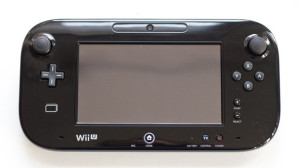Wii u Gamepad Review
The latest games console from Nintendo is the first in what is considered the eighth generation, which all began with the Magnavox Odyssey and Atari’s Pong home console in the Seventies.
There are two main parts to the new console: the box with the Wii U optical disc drive that forms the traditional console hub, and the very non-traditional peripheral Wii U GamePad.
The hub contains the main components and is the first Nintendo console to feature full high-definition graphics, with an output supporting up to 1080p resolution. The basic version of the Wii U features a fairly limited eight gigabytes of internal flash memory, but it’s expandable with USB hard drives up to two terabytes-an ample maximum capacity for the game downloads, video storage and more that you’re able to save on this machine.
It has a 45-nanometre, multi-core IBM CPU architecture -around half the manufacturing process size of the CPU in its predecessor (the Wii), which results in much greater processing efficiency. It has two gigabytes of DDR3 RAM -the ‘memory’ of the Wii U used for the dynamic storage of fast processes.
 Finally, its graphics processing unit (GPU) is based on AMD’s Radeon technology, with bespoke video output for the Wii U. Interestingly, both the CPU and GPU are compiled onto one multi-chip module (MCM), creating a single integrated circuit that processes more quickly and, vitally, takes up less of the console’s limited internal space.
Finally, its graphics processing unit (GPU) is based on AMD’s Radeon technology, with bespoke video output for the Wii U. Interestingly, both the CPU and GPU are compiled onto one multi-chip module (MCM), creating a single integrated circuit that processes more quickly and, vitally, takes up less of the console’s limited internal space.
A spotlight on the software
The most powerful consoles in the world are nothing without adequate support from the software developed for them. The games launcher, the Nintendo Network and its features, as well as Nintendo’s bespoke social network system, Wii verse, all sit on top of the Wii U operating system. It’s a piece of proprietary software that Nintendo has code-named IOS -Internal Operating System – and, unusually, it runs using a dedicated ARM-based CPU separate from the IBM CPU used by game software.
 The advantage of this is that the Wii U can utilize the full processing capacity of its main CPU to tackle the most power-intensive games. Not only that, but unlike PCs and many other consoles, while a game is running, the Wii U can switch the IOS off and unload it from memory, allowing the game to make full use of the system RAM.
The advantage of this is that the Wii U can utilize the full processing capacity of its main CPU to tackle the most power-intensive games. Not only that, but unlike PCs and many other consoles, while a game is running, the Wii U can switch the IOS off and unload it from memory, allowing the game to make full use of the system RAM.
What’s new with the Wii U GamePad?
The GamePad has an embedded 15.7-centimetre (6.2-inch) touchscreen that complements gameplay when the Wii U outputs to the television, and can be played even when the TV is off. It has many independent functions too, like stereo speakers and mic, volume control, a front-facing camera, infrared sensor strip and transceiver, wireless communications, rechargeable battery pack and, of course, lots of buttons. On top of this, it includes a near-field communications (NFC) chip that enables users to import content from supported devices simply by placing them onto the pad.
Nintendo won’t sell standalone Wii U GamePads – unless you break yours
Wii U Games That Use Two GamePad Tablets Will Arrive Next Year
The Wii U GamePad is a far more sophisticated piece of kit than any console controller in history and can almost be considered a separate console in itself. Nintendo has made the device deliberately large and comprehensively featured to take the player’s attention from the main console, which it refers to as the ‘stagehand’ – in other words, something that works unnoticed but plays an important role behind the scenes.
